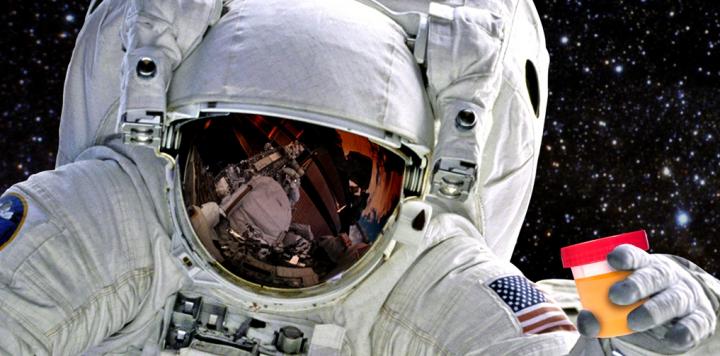Yeast Can Be Engineered to Turn Astronaut Pee Into Spaceflight Materials

Credit to Author: Becky Ferreira| Date: Tue, 22 Aug 2017 09:00:00 +0000
Sweat, urine, poop, and the other fun byproducts of the body are normally treated as waste to be discarded. But if humans are serious about expanding our civilization to the Moon, Mars, and other frontiers, we will need to learn how to optimize every available resource for survival, including the junk created by our own bodies.
Crews on the International Space Station (ISS) have already pioneered this approach by filtering their pee and sweat into drinkable water. Now, Mark A. Blenner, a bioengineer and assistant professor at Clemson University, has taken this “waste not, want not” attitude to the next level by demonstrating that the yeast strain Yarrowia lipolytica can be tweaked to turn bodily excretions like urine into handy materials, like nutrients or plastics.
Blenner will be presenting his research on Tuesday at the 254th National Meeting & Exposition of the American Chemical Society in Washington, DC.
“The Spacefaring Power of Pee” explainer on research into Y. lipolytica. Video: PBS/Reactions
“We chose [ Y. lipolytica] because it has a combination of favorable properties for using waste and to make a variety of useful products,” Blenner told me in an email. “It has a robust metabolism for several sugars and for different types of nitrogen, as well as fatty wastes. It tolerates a number of inhibitory chemicals. It has enough genetic engineering tools to enable us to make different products.”
In other words, the yeast is hardy, creative, and can be rigged to manufacture a wide variety of products that could benefit astronauts on long duration space missions, making it an exciting potential crew member.
Y. lipolytica thrives on nitrogen, which can be mined from urea, a compound found in urine, and carbon, which could be harvested from the carbon dioxide gas exhaled by astronauts, or from other in situ sources such as the Martian atmosphere. Blenner and his colleagues have demonstrated that this workhorse yeast can use these ingredients to make omega-3 fatty acids, a nutrient that boosts cardiovascular and brain health, among other medical benefits.
If packed on a spacecraft as supplements, these fatty acids would expire in just a few years. But generating them with Y. lipolytica would provide a renewable source of nutrients on the spot, to fit the needs of the crew at any point in the mission.
“This yeast is really good at making lipids and oleochemicals [like omega-3 fatty acids] which could both benefit astronauts,” Blenner told me. “It should also be good at making other molecules from the building blocks that make up lipids.”
Blenner and his colleagues have shown that Y. lipolytica can be engineered to generate monomers, which are molecules that can be linked together to produce useful polymer materials. These building blocks could be fed into an onboard 3D-printer to make on-demand plastic parts and tools by future spacecraft crews.
Read More: Scientists Want to Mine Our Poop for Gold
There’s still much research to be done before these yeast powerhouses will be ready to supply astronauts with ready-to-grow essentials on their endeavors beyond Earth orbit. Scientists will need to figure out how to optimize production and manage any wasteful byproducts of this microbial alchemy. This particular species will need to be road-tested in outer space, like previous yeasty astronauts, such as the baker’s yeast that was sent to the ISS in 2011.
“We don’t know how [the yeast] will perform relative to Earth,” Blenner said. “We are planning to try to get our yeast to the International Space Station in next couple of years.”
If your interest is piqued, check out this live YouTube press conference on the research, starting at Tuesday at 2PM ET. And the next time you take a leak or work up a sweat, perhaps you’ll have a new appreciation for the potential value of the ingredients in bodily waste that we normally take for granted.
Get six of our favorite Motherboard stories every day by signing up for our newsletter.